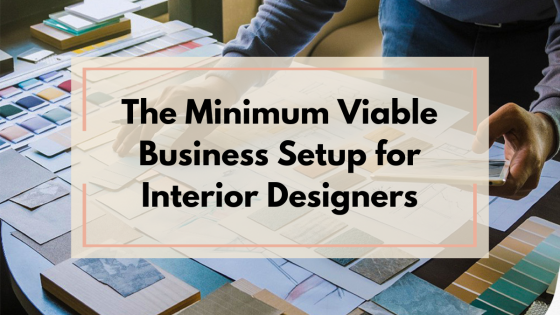Developing a Signature Style That Attracts High-End Clients

Picture walking into a room and instantly knowing who designed it – without having to ask. That's the power of a signature style, and it's what sets thriving interior design businesses apart from those that merely survive. As someone who has guided countless designers through business transformation, I've witnessed firsthand how developing a distinct design identity can be the catalyst that propels a successful practice into an industry-leading firm. But here's what many don't realize: your signature style is about creating a recognizable brand that naturally attracts ideal clients and commands premium rates, and it isn't just about the aesthetics.
If you're an established interior designer with a solid portfolio and steady clients, you might be wondering why you need to focus on developing a signature style now. Perhaps you've found yourself taking on various projects that, while profitable, don't quite align with your vision. Or maybe you're finding it challenging to scale your business because you're spending too much time explaining your approach to potential clients. The truth is, a well-defined signature style doesn't just make you more memorable, it also streamlines your entire business operation, from marketing to project execution.
Today, we're going to explore how to develop and refine your signature style in a way that not only showcases your creative vision but also attracts the right clients and supports your business growth goals. However, this isn't about limiting your creativity or boxing yourself into one specific look, but rather creating a foundation that makes your work instantly recognizable and your business more scalable.
Understanding the Foundation of Your Signature Style
Before diving into the practical steps of developing your signature style, it's essential to understand what makes a signature style truly effective. Your signature style should be more than just a preferred color palette or go-to materials. It should be a reflection of your design philosophy, business values, and the unique way you solve your clients' problems.
Think of your signature style as your design DNA. It's the thread that runs through all your work, making each project uniquely yours while still accommodating your client's preferences and needs. The most successful designers have mastered the art of maintaining their distinct style while being flexible enough to adapt to different client requirements.
67893a951a742_lg.png)
Step #1: Identifying Your Core Design Elements
Start by analyzing your most successful projects. These are the ones that not only pleased your clients but also felt most authentic to you. Look for recurring elements that naturally appear in your work:
- What materials do you consistently gravitate toward?
- Are there specific spatial arrangements that you find yourself repeatedly implementing?
- What color combinations do you use that consistently receive positive feedback?
- Which design solutions do you find yourself most passionately advocating for?
Document these patterns and consider how they align with your business goals and target market. Remember, your signature style should not only please you aesthetically but also resonate with the clients you want to attract.
67893c3f4830b_lg.png)
Step #2: Refining Your Style for Business Growth
Now that you've identified your core design elements, it's time to refine them in a way that supports your business objectives. This means:
- Creating a clear design process that showcases your signature elements while remaining adaptable.
- Developing a portfolio that emphasizes your distinct approach.
- Establishing pricing structures that reflect the unique value your signature style brings.
- Training your team to understand and implement your design philosophy consistently.
The key is to document these elements in a way that makes them reproducible without losing their special quality. This documentation becomes invaluable as you scale your business and bring on new team members.
6789416e5c71e_lg.png)
Step #3: Marketing Your Signature Style
Your signature style should be evident in every aspect of your business, from your website to your social media presence. Create content that:
- Highlights the thinking behind your design choices.
- Showcases before-and-after transformations that demonstrate your unique approach.
- Shares client testimonials that speak specifically to how your signature style solved their problems.
- Explains your design philosophy in ways that resonate with your target market.
Remember to maintain consistency across all platforms while adapting your message to each channel's specific audience and format.
6789433184a94_lg.png)
Step #4: Implementing Your Style at Scale
As your business grows, maintaining consistency in your signature style becomes both more challenging and more crucial. Consider:
- Creating detailed style guides for your team.
- Developing processes for quality control that ensure your signature elements are properly implemented.
- Building a resource library of preferred materials, finishes, and suppliers.
- Establishing training programs for new team members.
The goal is to make your signature style replicable without diluting its essence. This allows you to take on more projects while maintaining the quality and uniqueness that attracted clients in the first place.
Step #5: Staying True to Your Style While Evolving
Your signature style shouldn't be static. It should evolve as you grow and as design trends change. The key is to maintain your core aesthetic while incorporating new elements that keep your work fresh and relevant. This might mean:
- Regularly reviewing and updating your design elements.
- Incorporating new materials and technologies that align with your aesthetic.
- Adapting to changing client needs while maintaining your distinct approach.
- Continuously educating yourself and your team about industry innovations.
Conclusion
The journey to developing and implementing a distinctive design approach might seem challenging, but the rewards are worth it. This a strategic move that positions you as an expert and makes your business irresistible to the right clients. When you have a well-defined signature style, every aspect of your business becomes more intentional and efficient from marketing and client acquisition to team training and project execution.
Take the first step today by analyzing your past projects and identifying those recurring elements that make your work unique. Document what you find and start thinking about how you can intentionally incorporate these elements into your future projects. By uncovering your design DNA, refining your portfolio, and presenting a cohesive brand, you’ll create a style that stands out in a crowded market.
Want to learn more about how to leverage your signature style for business growth? Join our exclusive WhatsApp community of interior design professionals, where we share strategies and practical tips for scaling your design business. Together, we can turn your unique vision into a sustainable practice.
Thank you for reading ❤️
Categories: : Business Strategy
 Rikaza Shakeer
Rikaza Shakeer 



